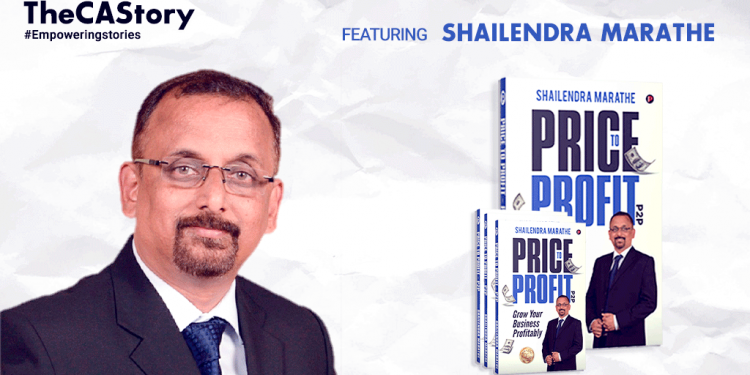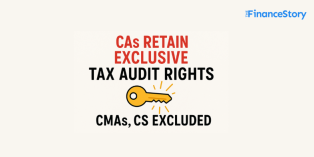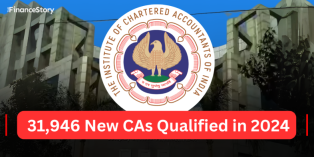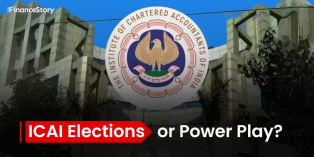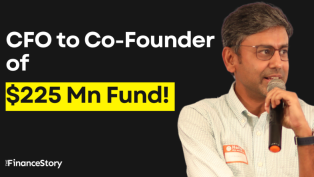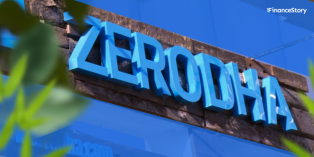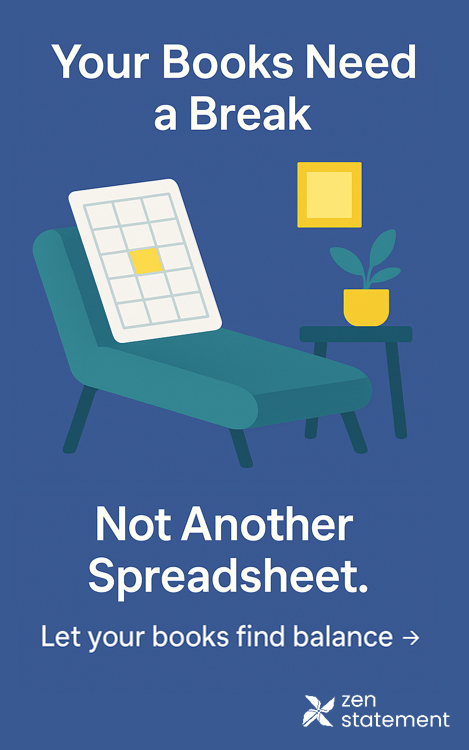- Hey folks, I am Shailendra Marathe, a Chartered Accountant with over two decades of experience in business finance, financial markets, FinTech, and risk management.
- In 2016, I launched my venture, CFO Axis, a boutique advisory firm, that provides practical financial advice and consulting to businesses, by acting as a Virtual CFO for their business.
- Around the same time (2016) I started working on my first book. And I left it halfway through, after hitting writer’s block.
- Finally, in 2019, with a single-minded focus, I finished writing a Non-Fiction book “Price to Profit” – a book on leveraging pricing strategies for growth and profitability.
- And even published it in Feb 2020!
- So, here’s my story of How I wrote and self-published a book that can help you grow your business profitability!
Back Story – Why did I decide to write a book
I love reading books, and my interests are varied. I like reading non-fiction (historical, spiritual, and self-development books), as well as fiction (mostly humor and thrillers, not romance).
I guess somewhere in the back of my mind, a desire to write a book existed for some time.
Over the last few years, I met a few well-accomplished authors!
I would always ask them about how they came up with the idea, the process they followed, how they learned the art of writing, and so on. And even discussed with them my dream of writing a book!
They encouraged me to write one. (One great thing about most successful writers is that they encourage you to write!)
I attended a couple of workshops on writing fiction and sought advice from some of successful fiction writers.
I was now convinced that I had to write my own book!
Writing my first fiction book…only to abandon the same!
In 2016, I started writing my first book. I took up fiction because I always liked good fiction, and that too, a thriller.
I detailed my plot and commenced writing enthusiastically. However, after almost two months and writing close to 45,000 words, I hit writer’s block.
I also lost confidence in the plot and my writing style. The challenge with writing fiction is that there is no end to improvisation.
You come up with more and more ideas as you write, try to accommodate those ideas, and lose control of the plot.
I again consulted my friends who are successful authors. They advised me to persist and review the book only after the first draft is finished. However, I didn’t. I abandoned that novel and started working on two other plots, and after some time abandoned them midway as well!
Looking back, I realize, I should have followed their advice.
So, my first book is yet to be completed!
Between 2016-2018, I attempted at writing two more fiction books but that also ended up with no result!
So, what next? Should I give up on writing a book?
Finally, the Idea of writing a Non-fiction Book on ‘Pricing’
Over the last few years, my interactions with academicians, professionals, and entrepreneurs made me aware that, while businesses are focused on growth, profitability, costs, and efficiencies, they are not generally aware of the impact that ‘pricing’ could have on these goals.
Most entrepreneurs are ‘price takers’ who accept the price set by the market and generate profits by driving efficiencies and reducing costs.
They do not realize the power of pricing, and in case they are aware, they do not know which existing strategies they can leverage in their business. Implementing a pricing strategy for a business that is already in existence has its own challenges and complexities.
Having successfully helped my clients with a pricing strategy for their business, I thought of crystalizing that experience through a book. What better way to make that experience available to a larger population than a book?
That’s how the idea of writing non-fiction was born.
I created an outline of the book, and developed it a little further, but didn’t know how to progress further!
I was in the same situation again, albeit this time stuck on non-fiction!
After 3 failed attempts…finally wrote, and completed my book!
Having mastered the art of beginning to write a book, and leaving it half-finished, I could well have continued with it!
But my friend and coach, Kailash Pinjani, made me commit to writing this book by declaring the intention to the world and asking for pre-launch orders.
I posted my intent of writing the book on Facebook and LinkedIn.
I received a great response to the pre-launch offer, and hence I was left with no alternative but to work on the book and deliver on my promise! I think that commitment to the external world was very critical in pushing me to keep my word.
Another friend and an ace writer himself, Deepak Parbat, guided me in the process. The process involved:
- Breaking down the central idea of the book into chapters,
- Arranging those chapters in a logical order,
- Documenting the key messages that each chapter intends to convey,
- And then expanding on those key messages.
Once I developed confidence that I should be able to finish the book this time using this step-by-step process, I worked a marathon on the book for six weeks to finish it from the first word.
Everything else besides the book was a lower priority! That helped.
Extra Tip: Do not try to be a perfectionist in writing the first draft, you will get stuck because writing is a creative process, and ideas keep evolving.
Self- Publishing a book
There are broadly two types of publishers:
1. The Traditional ones
- The traditional publishers are the ones whose names you look up to when buying a book.
- The fact that they published a book influences your buying decision. However, it takes a very long to get a traditional publisher to agree to even review a book.
2. Those who help you self-publish
- They also have their own ideas regarding how lengthy the book should be, which genre it should belong to, etc.
- This puts a lot of restrictions on your creativity, the message you want to convey, and the goal of writing a book.
I, therefore, chose self-publishing over going to a traditional publisher because after some research I realized that you must market your book yourself. The self-publishers typically help you with the publishing process – i.e., proofreading, graphics, layout, converting to e-book, cover design, and so on.
They also help in getting the title registered as well as in getting the book listed on Amazon, mailing the books to the buyers, etc. These tasks are bound to be overwhelming for most of us.
My Learnings…
I am sharing below a few things I learned in the last few years of working on a book. Hope these lessons will be useful to you in case you want to write a book.
- Everyone has a story to tell. The question to ask is, do you want to take those efforts?
- Don’t worry too much about whether your book will sell and how much it will sell. The world’s most successful authors had no idea they will be so famous someday.
- Perfect is the enemy of good. Don’t be a perfectionist. There is nothing like a perfectly written book. Every time you review your draft, you will find scope for improvement,
- If you believe your book is useful, don’t be ashamed of recommending the same. You must market the book yourself!
- One thing I quickly realized is that everyone not just has his/her own style of writing, but also the process. Some develop a plot fully before writing the first word of the first draft, whereas some start writing with a broad plot in mind and let their imagination flow. Some follow a strict routine, and do not!
The book got published in February 2020. You can buy the book here: – “Price to Profit” – a book on leveraging pricing strategies for growth and profitability.
Hopefully, this book will set the reader on a path to discover which pricing strategies work best for their business.
Shailendra Marathe, Chartered Accountant and Post Graduate of IIM Bangalore, with over 25 years of global experience in finance & strategy. He is also the founder of CFO Axis which provides strategic financial advice to entrepreneurs, startups, and small & medium businesses.




